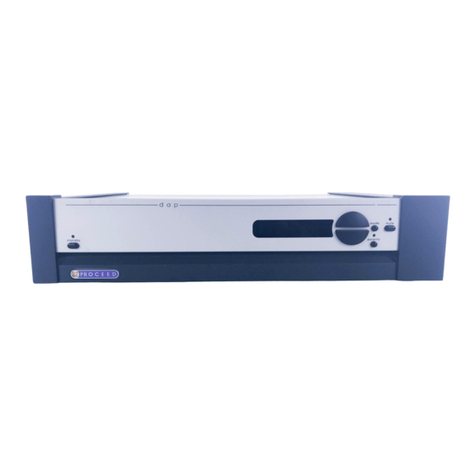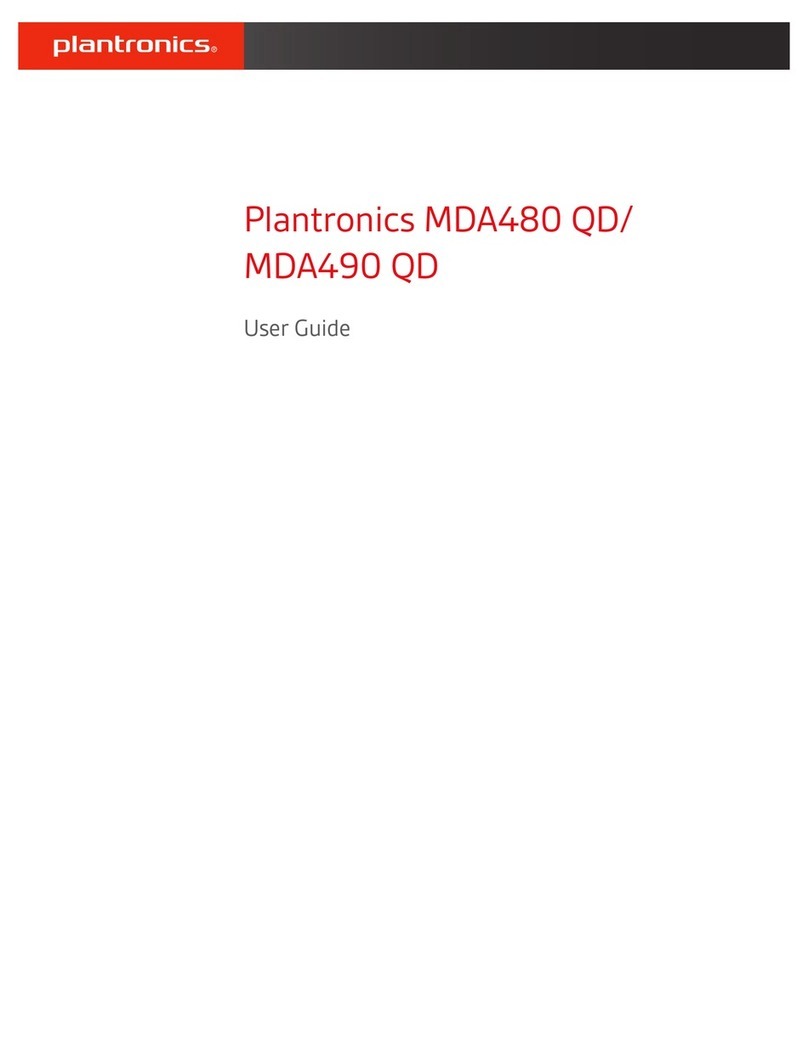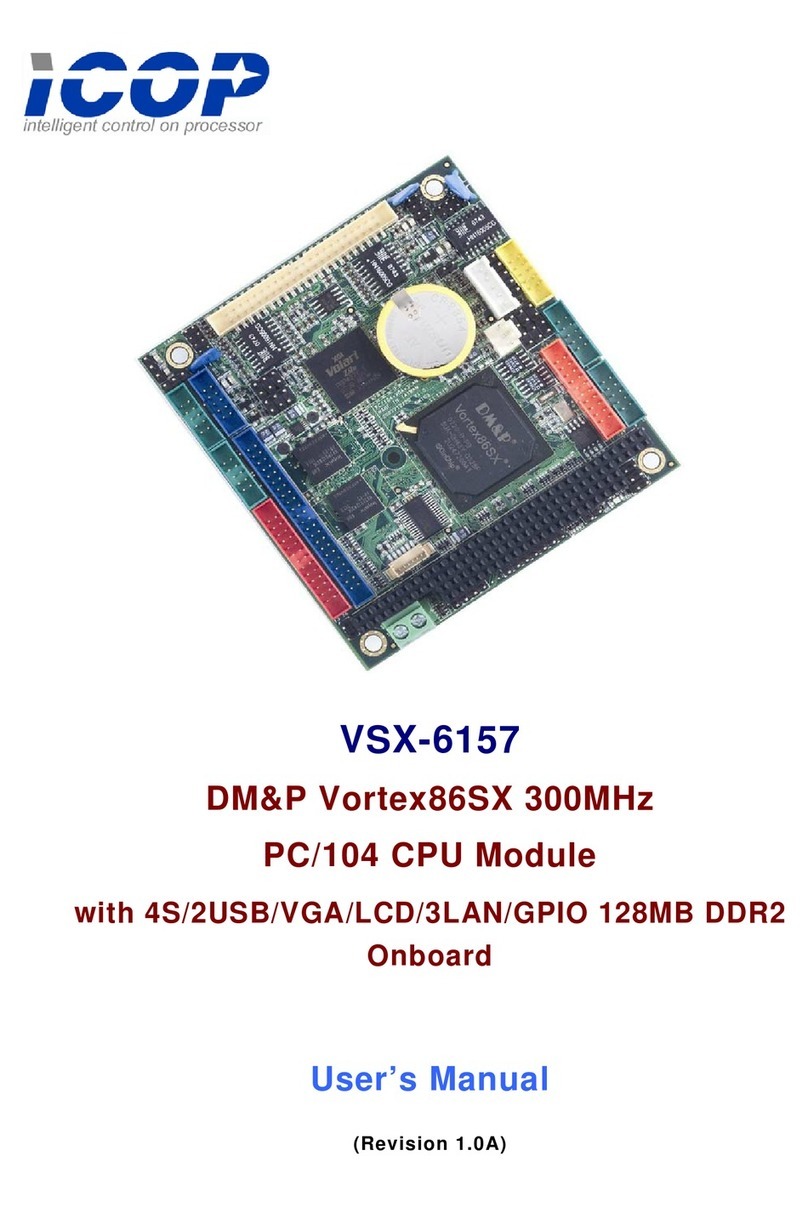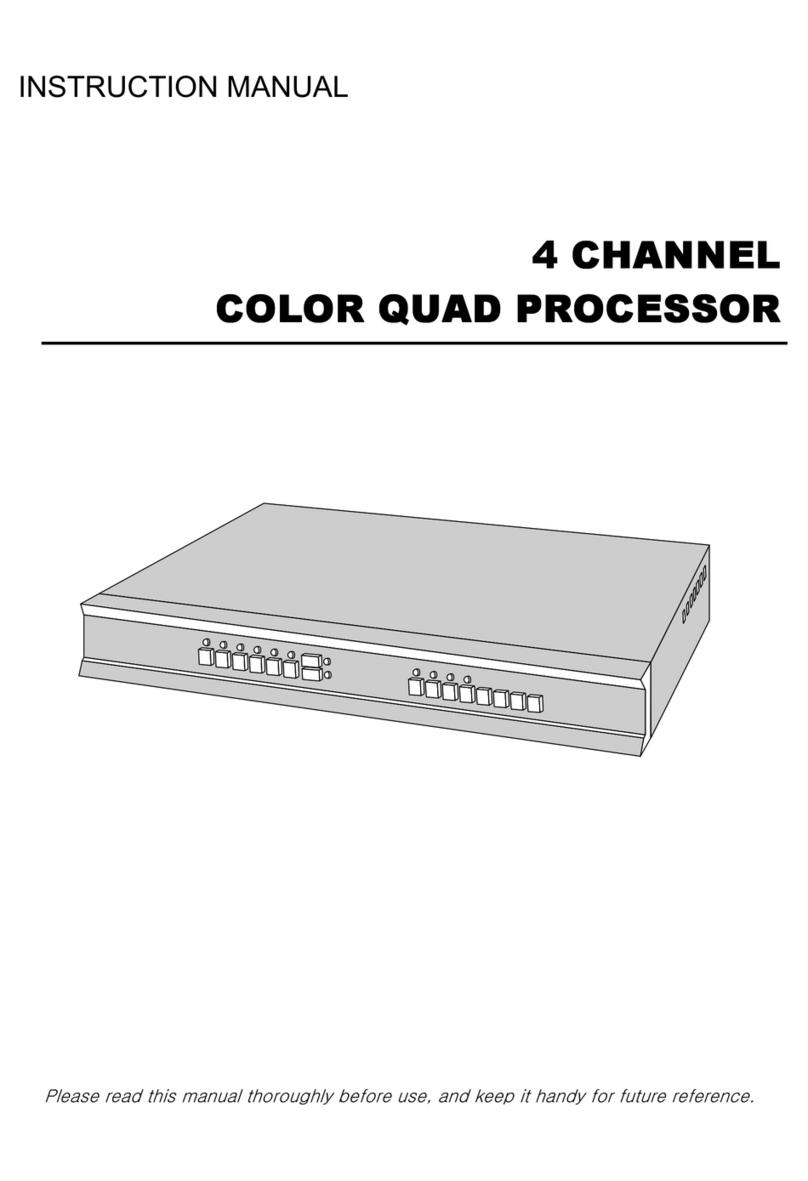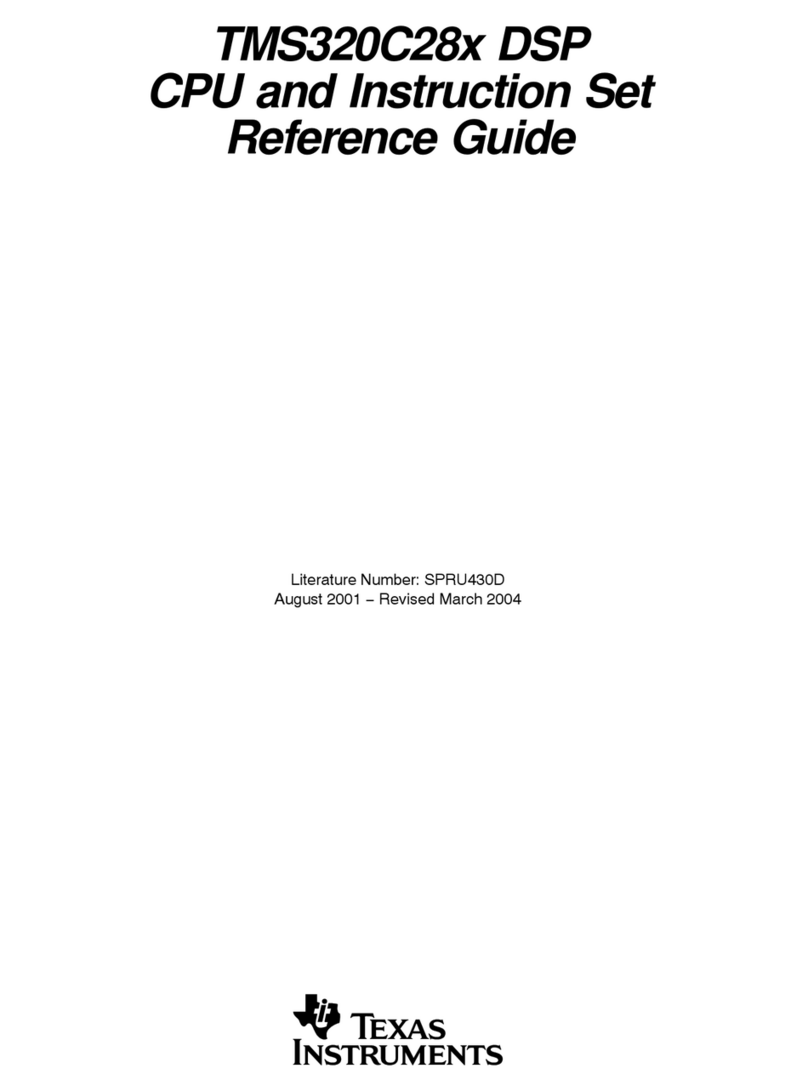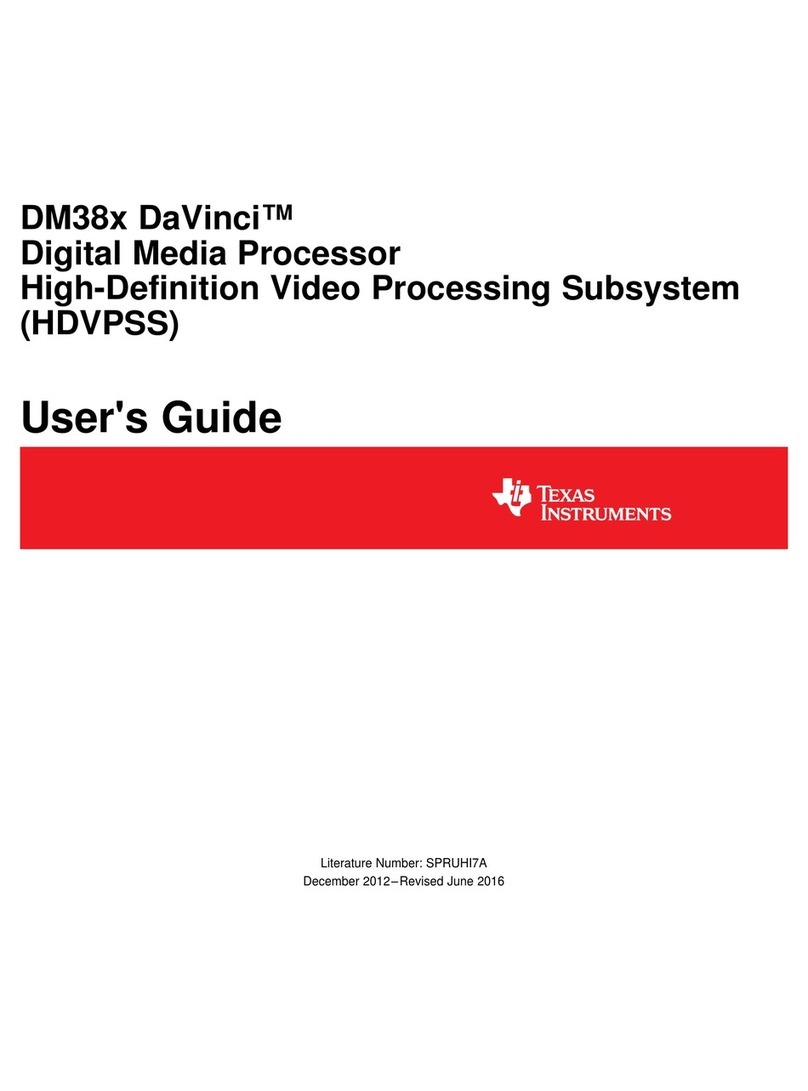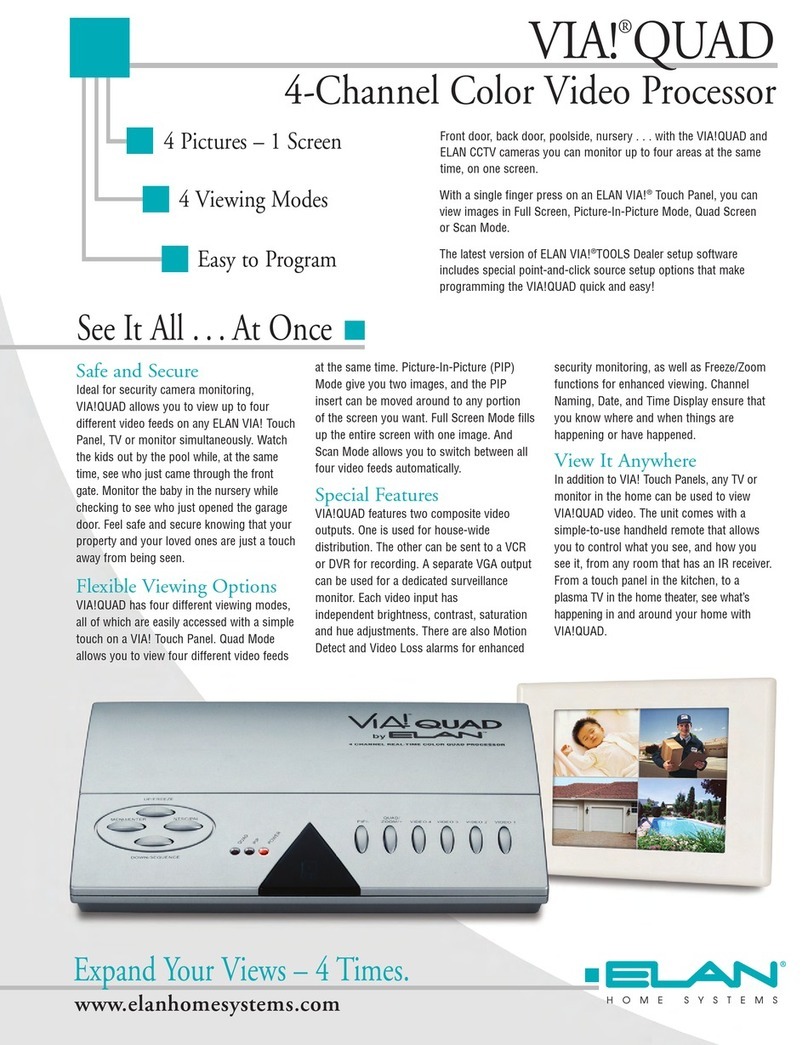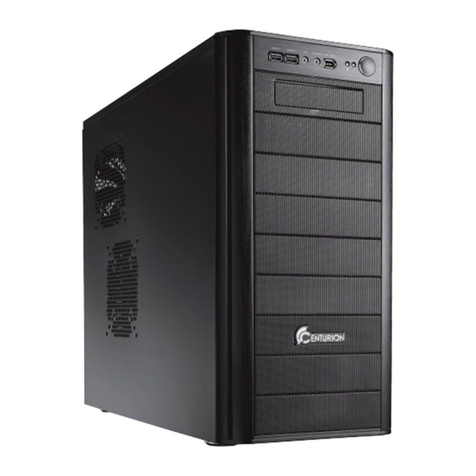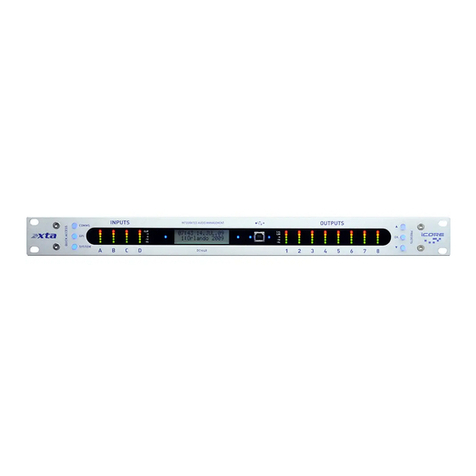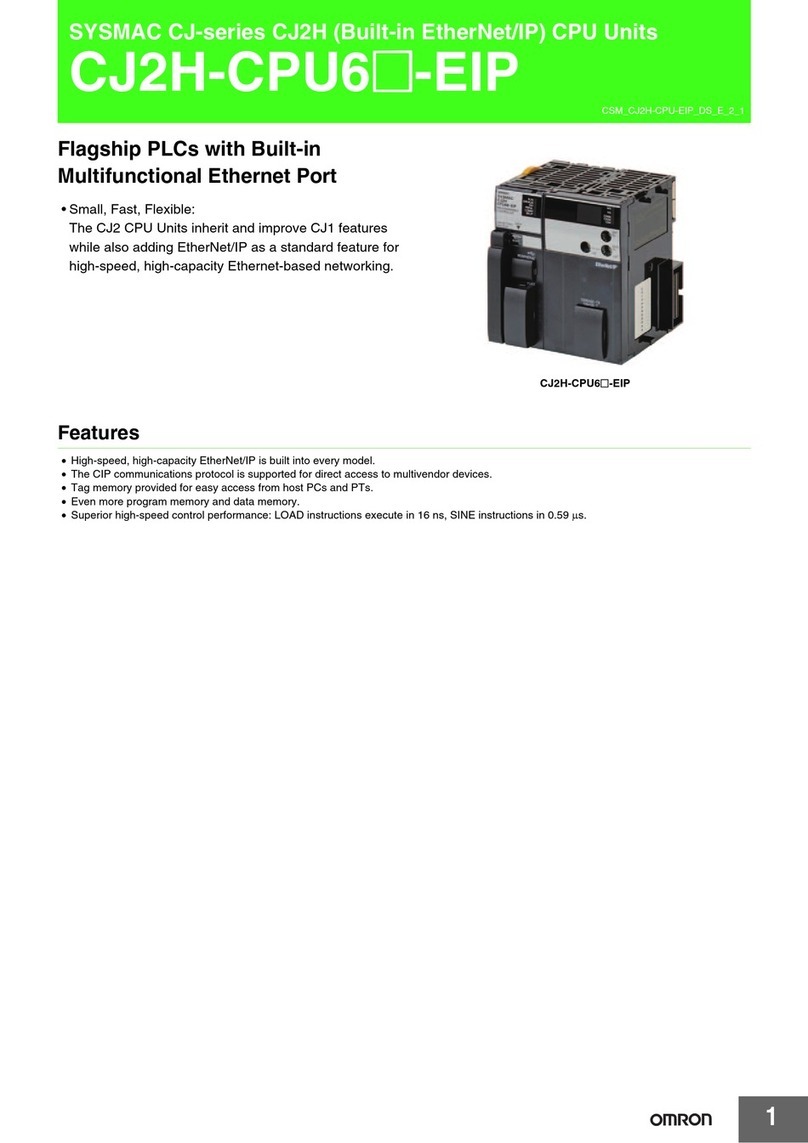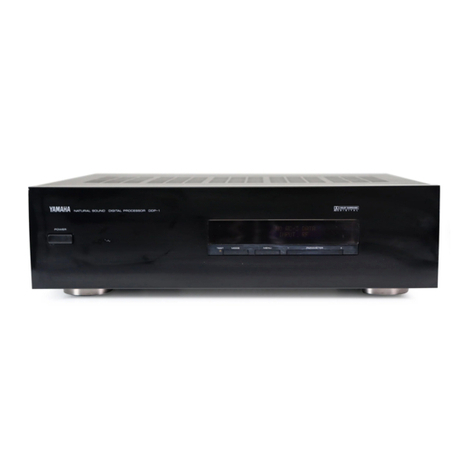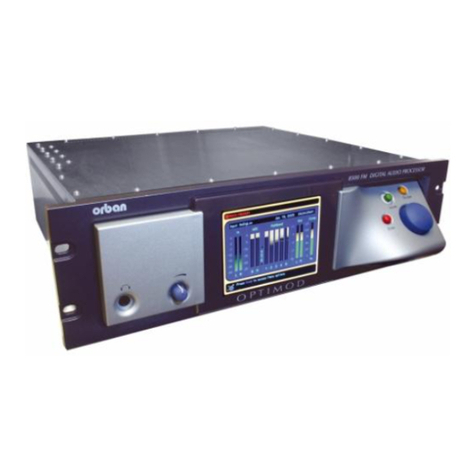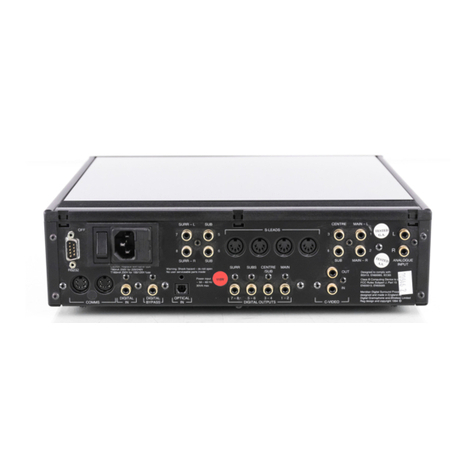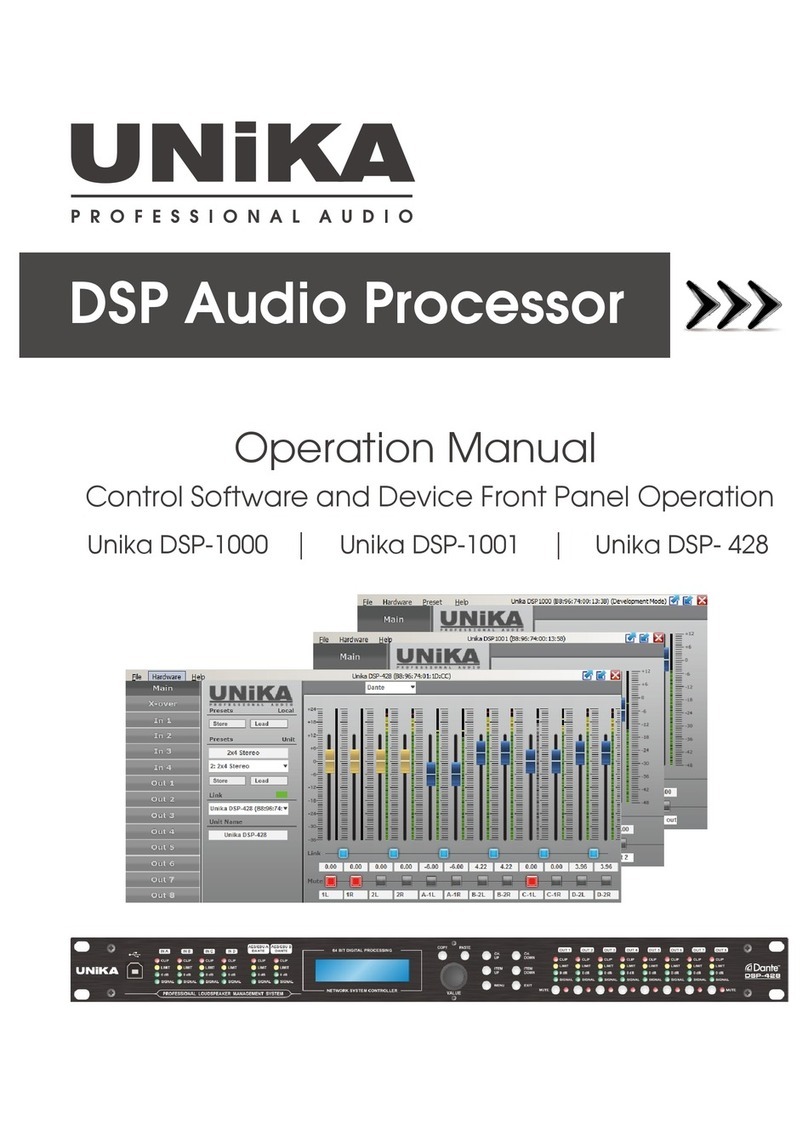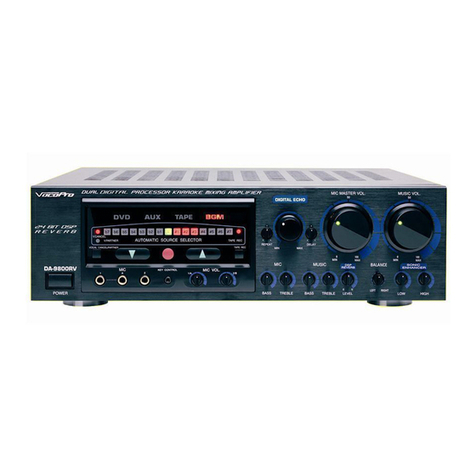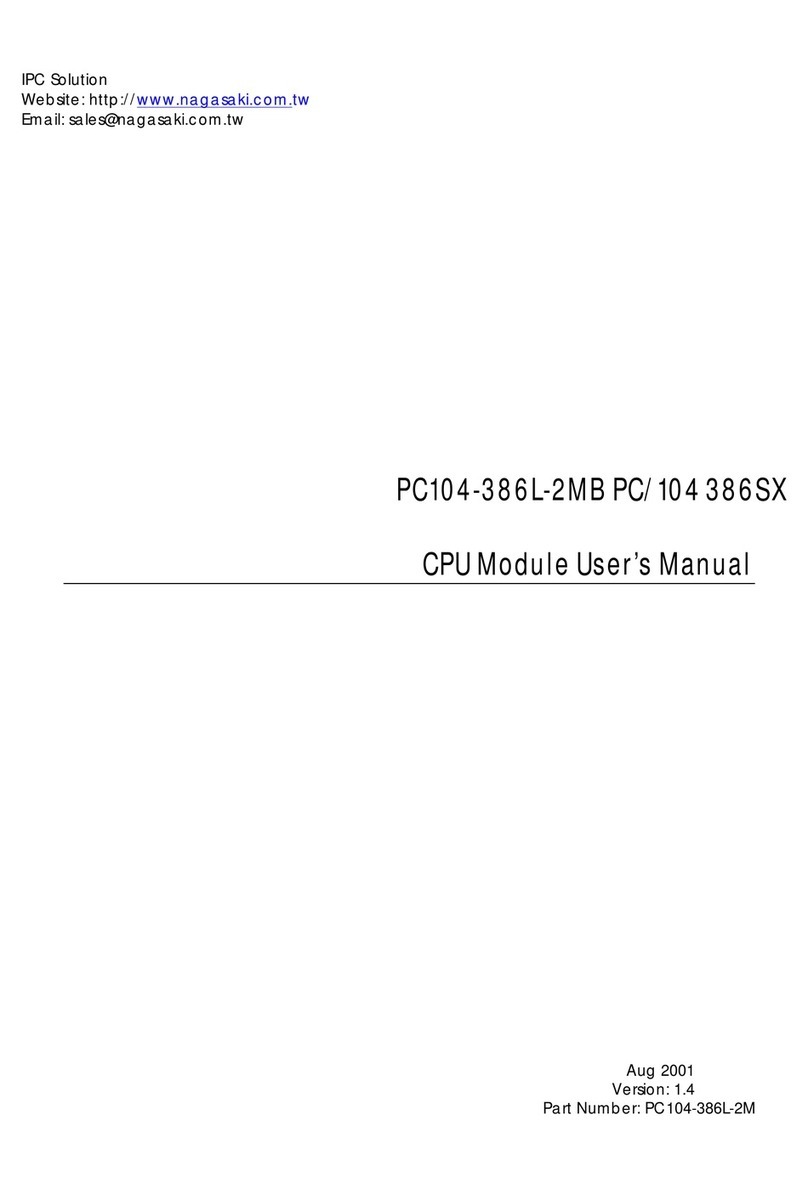Madrigal Audio mark levinson N 30 User manual

23
Madrigal Audio Laboratories, Inc.
Operating Manual
Mark Levinson®
Nº30
Reference Digital
Processor

25
Important safety instructions
Please read all instructions and precautions carefully and completely before operating your Nº30
Reference Digital Processor.
1. ALWAYS disconnect your entire system from the AC mains before connecting or disconnecting
any cables, or when cleaning any component.
2. This product is equipped with a three-conductor AC mains power cord which includes an earth
ground connection. To prevent shock hazard, all three connections must ALWAYS be used. If
your electrical outlets will not accept this type of plug, an adapter may be purchased. If an
adapter is necessary, be sure it is an approved type and is used properly, supplying an earth
ground. If you are not sure of the integrity of your home electrical system, contact a licensed
electrician for assistance.
3. AC extension cords are not recommended for use with this product. If an extension cord must
be used, be sure it is an approved type and has sufficient current-carrying capacity to power
this product.
4. NEVER use flammable or combustible chemicals for cleaning audio components.
5. NEVER operate this product with any covers removed.
6. NEVER wet the inside of this product with any liquid.
7. NEVER pour or spill liquids directly onto this unit.
8. NEVER block air flow through ventilation slots or heatsinks.
9. NEVER bypass any fuse.
10. NEVER replace any fuse with a value or type other than those specified.
11. NEVER attempt to repair this product. If a problem occurs, contact your Mark Levinson dealer.
12. NEVER expose this product to extremely high or low temperatures.
13. NEVER operate this product in an explosive atmosphere.
14. ALWAYS keep electrical equipment out of the reach of children.

26
From all of us at Madrigal Audio Laboratories, thank you for choosing the Mark Levinson
®
Nº30
Reference Digital Processor.
A great deal of effort went into the design and construction of this precision device. Used properly, it
will give you many years of enjoyment.

27
Table of contents
Front panel, Nº30 .........................................................................................1
Display, Nº30 ................................................................................................ 4
Rear panel, Nº30 .........................................................................................5
Male XLR output connector (analog) .......................................... 5
Female XLR input connector (digital) .......................................... 6
Male XLR output connector (digital) ............................................ 7
Rear panel, PLS-330 ....................................................................................8
AC power cord polarity ................................................................. 9
Unpacking and placement .....................................................................10
Unpacking ............................................................................................ 10
Placement ........................................................................................... 10
Ventilation ............................................................................................ 10
Custom installations ............................................................................ 10
Voltage selection ......................................................................................11
Set-up and installation ..............................................................................12
Assigning input aliases ........................................................................ 12
DIP switch positions for input aliases ........................................... 14
Preset DIP switch positions ........................................................... 14
Connectors and cable ....................................................................... 15
Accommodating digital sources with only RCA digital output ..... 15
Power connection and system activation ....................................... 16
Care and maintenance ...........................................................................17
Specifications ............................................................................................18
About de-emphasis…......................................................................... 18
Dimensions.................................................................................................19
Nº30 Reference Digital Processor ............................................... 19
PLS-330 Power Supply ................................................................... 20

1
display
intensity
copy protect aes/ebu emphasis
digital record
select
MADRIGALAUDIO LABORATORIES
polarity
invert 12345678 standby
REFERENCE DIGITAL
PROCESSOR
Nº 30
5
37
8 9 4 10 6 2
1
Front panel, Nº30
1 standby
Provided the Nº30 is connected to AC power (via the PLS-330),
pressing this button takes the Nº30 out of "standby" mode, turns the
Display on, and enables the front-panel controls.
Pressing standby again places the Nº30 into standby mode, turns
the Display off, and disables the front-panel controls.
2 standby LED
While the Nº30 is in standby mode, this LED flashes every five
seconds. When the Nº30 is ready to operate (that is, when it's not in
standby mode), this LED remains lighted.
3 Source selection buttons
Pressing these buttons selects the digital source, according to the
input connections on the rear panel (see "Rear panel, Nº30"). Only
one source at a time may be selected.
When changing source material with a digital source (like a
DAT) that selects among different sampling frequencies, the
Nº30 can generate a transient "click" as it locks onto the new
sampling frequency. To prevent this click from coming
through your loudspeakers, adjust your system's volume
control to its lowest level before changing source material.
When power is first applied to the Nº30 (or when power is restored
after an interruption), source 1 is automatically selected.
When the Nº30 is taken out of standby mode, the source last
selected before going into standby will be automatically selected.
PRECAUTION

2
4 Display
See "Display, Nº30."
5 display intensity
Pressing this button varies the brightness of the Display. Four
brightness levels are available.
When power is first applied to the Nº30 (or when power is restored
after an interruption), the Display is automatically set to its brightest
level.
Pressing the display intensity button once dims the Display one
level; pressing it again dims it further; pressing it again turns the
Display off. Pressing display intensity once more returns the Display
to its brightest level.
6 digital record select
Pressing this button allows you to select the digital source you want
to record.
It's possible to record a different digital source than the one
selected for listening.
To record a digital source, press digital record select. The Nº30's
Display will show RECORD followed by the source currently
selected. For example:
If you want to record a different source than the one currently
selected, press the corresponding source selection button; the
Display will then show the input number of that source (for
example, RECORD DBS2).
After a few seconds, the Display will return to normal.
When using a digital recorder (like a DAT) that also allows
recording of analog signals, a specific combination of
interconnections and settings on the digital recorder, the
Nº30, and an associated preamplifier may create a
"feedback loop" that may damage your system's
loudspeakers. For guidance in avoiding such a feedback
loop, consult your Mark Levinson dealer.
PRECAUTION

3
7 polarity invert
Pressing this button inverts the polarity of the digital signal, to
compensate for differences in phase during the recording process.
Some recordings may simply "sound better" when this function is
active.
While polarity invert is selected, the LED above the button will light.
Note: polarity invert doesn't affect the digital outputs, and
isn't available for inverting the polarity of digital signals to be
recorded.
Note: polarity invert may be operated by infrared remote
control, but only when the Nº30 is connected to certain
compatible Mark Levinson components. Complete
instructions are included in those components' operating
manuals.
8 copy protect LED
This LED lights when the Nº30 detects encoded copy protection in
the digital program being processed.
9 aes/ebu LED
This LED lights when the Nº30 detects that the digital program
being processed conforms to the AES/EBU professional standard.
Note: The aes/ebu LED lights only when AES/EBU professional-
standard recording information is present in the data stream.
Using AES/EBU-standard interconnections doesn't activate
this LED
unless
AES/EBU data is present in the source material.
Playback of non-AES/EBU CDs or DATs won't activate the
aes/ebu LED, even if the associated transport is connected
according to the AES/EBU standard.
10 emphasis LED
This LED lights when the Nº30 detects recording pre-emphasis in the
digital program being processed, and subsequently employs its
de-emphasis circuitry (see "Specifications").
Note: The de-emphasis circuitry of the Nº30 is designed to be
compatible with all known digital standards. Under certain
conditions, however, the emphasis LED will light in error (that
is, when the digital program doesn't contain recording pre-
emphasis).
This isn't a malfunction of the Nº30. Rather, it's the result of
incorrect signals generated by the program source's
transport. Depending on your transport and how you
operate it, you may never see this condition. Even when the
condition exists, it has no effect on sonic quality.

4
1 2 3
Display, Nº30
1 Input alias
This part of the Nº30's Display shows the type of input selected,
according to the settings of the internal DIP switches (see
"Assigning input aliases" in the "Installation" section of this manual).
The input aliases available are: CD (Compact Disc), LD (Laser Disc),
DBS (Digital Broadcast), DAT (Digital Audio Tape), VCR (Video
Cassette), and AUX (other digital sources).
2 Input number
This part of the Nº30's Display shows the input number of the
selected digital source, according to the connections on the rear
panel (see "Rear panel, Nº30").
3 Sampling frequency
This part of the Nº30's Display shows the sampling frequency of the
digital input being processed, expressed in kilohertz (kHz). One of
three sampling frequencies will be shown: 32kHz, 44.1kHz, or 48kHz.
After you press one of the source selection buttons, the Nº30 will
reduce the volume and this part of the Display will show:
While the Nº30 is attempting to lock onto a digital signal, this part
of the Display will show:
If no digital signal is present (if the source is turned off, is improperly
connected, or is disconnected), this part of the Display will show:

5
Rear panel, Nº30
right
analog output
balanced analog
output
analog dc in
left
analog output
balanced analog
output
analog dc in
digital
dc in 1 2 3 4 5 6 7 8
digital inputs
3 34 5 6 7 8 9
master slave
electrical
digital outputs
opticalelectrical
rec monitor rec
optical
communication
ports
balanced analog
output balanced analog
output
PUSH PUSH PUSH PUSH PUSH
2
1
Disconnect all associated equipment from the AC mains BEFORE
making any signal connections and applying power to the Nº30/PLS-
330.
1 analog out
These outputs provide single-ended line-level analog audio (via
cables equipped with RCA-type connectors) to a preamplifier,
integrated amplifier, or receiver.
When using a digital recorder (like a DAT) that also allows
recording of analog signals, a specific combination of
interconnections and settings on the digital recorder, the
Nº30, and an associated preamplifier may create a
"feedback loop" that may damage your system's
loudspeakers. For guidance in avoiding such a feedback
loop, consult your Mark Levinson dealer.
2 balanced analog outputs
These outputs provide balanced line-level analog audio (via
cables equipped with XLR-type connectors) to a preamplifier,
integrated amplifier, or receiver equipped with balanced inputs
(see "Set-up and installation").
Pin 1: Signal ground
Pin 2: Signal +(non-inverting)
Pin 3: Signal –(inverting)
Connector ground lug: chassis ground
3 analog dc in
These inputs, one for each channel, accept DC power from the
PLS-330 (via the supplied cables equipped with five-pin
connectors).
Connect the left channel's audio dc in on the rear panel of the
Nº30 to the left audio dc out on the rear panel of the PLS-330;
likewise, connect the right channel's audio dc in on the rear panel
of the Nº30 to the right audio dc out on the rear panel of the PLS-
330.
PRECAUTION
PRECAUTION
12
3
Male XLR output
connector (analog)

6
4 communication ports
These ports are reserved for connection to certain compatible
Mark Levinson components. Complete instructions are included in
those components' operating manuals.
5 digital dc in
This input accepts DC power from the PLS-330 (via the supplied
cable equipped with two-pin connectors).
Connect dc in (digital) on the rear panel of the Nº30 to the dc out
(digital) on the rear panel of the PLS-330.
6 digital inputs, electrical (1 – 5)
These inputs accept digital audio (DAS, via cables equipped with
XLR-type connectors) from digital sources such as a compact disc
transport, laser disc transport, digital audio tape transport, digital
broadcast receiver, or video cassette recorder.
Pin 1: chassis ground
Pin 2: Signal +(non-inverting)
Pin 3: Signal –(inverting)
Connector ground lug: chassis ground
Note: To connect digital sources which provide digital output
only via RCA-type connectors, see "Accommodating digital
sources with only RCA digital output."
When using a digital recorder (like a DAT) that also allows
recording of analog signals, a specific combination of
interconnections and settings on the digital recorder, the
Nº30, and an associated preamplifier may create a
"feedback loop" that may damage your system's
loudspeakers. For guidance in avoiding such a feedback
loop, consult your Mark Levinson dealer.
7 digital inputs, optical (6 – 8)
These inputs accept digital audio (DAS, via cables equipped with
optical connectors) from digital sources such as a compact disc
transport, laser disc transport, digital audio tape transport, digital
broadcast receiver, or video cassette recorder.
Input 6 is an ST-type optical connector; inputs 7 and 8 are EIAJ-
type optical connectors.
When using a digital recorder (like a DAT) that also allows
recording of analog signals, a specific combination of
interconnections and settings on the digital recorder, the
Nº30, and an associated preamplifier may create a
"feedback loop" that may damage your system's
loudspeakers. For guidance in avoiding such a feedback
loop, consult your Mark Levinson dealer.
PRECAUTION
PRECAUTION
PUSH
21
3
Female XLR input
connector (digital)

7
8 digital outputs, electrical
These outputs provide digital audio (DAS, via cables equipped
with XLR-type connectors) to a digital processor, digital audio tape
recorder, preamplifier, integrated amplifier, or receiver equipped
with XLR-type digital inputs.
Pin 1: Chassis ground
Pin 2: DAS +(non-inverting)
Pin 3: DAS –(inverting)
Connector ground lug: chassis ground
The monitor digital output is controlled by the source selection
buttons on the front panel.
The rec digital output is controlled by the digital record select
button, and is unaffected by the source selection buttons.
9 digital output, optical
This output provides digital audio (DAS, via a cable equipped with
EIAJ-type optical connectors) to a digital processor, digital audio
tape recorder, preamplifier, integrated amplifier, or receiver
equipped with optical digital inputs.
This rec digital output is controlled by the digital record select
button, and is unaffected by the source selection buttons.
12
3
Male XLR output
connector (digital)

8
4
left analog dc
out
right analog dc
out
50 –60HZ
90 –110VAC
~
~
~
105 –125VAC
180 –220VAC
210 –240VAC
230 –250VAC
~
~~
operating voltage:
WARNING:
BEFORE ATTEMPTING TO OPERATE
THIS DEVICE, REFER TO OWNER'S MANUAL FOR
PROPER OPERATING INSTRUCTIONS AND SAFETY
PRECAUTIONS. HAZARDOUS VOLTAGE AVAILABLE
INSIDE; DISCONECT AC ~ MAINS CABLE BEFORE
REMOVING COVER.
digital dc
out
1 3 12
Rear panel, PLS-330
Disconnect all associated equipment from the AC mains BEFORE
making any signal connections and applying power to the Nº30/PLS-
330.
1 right analog dc out, left analog dc out
These outputs, one for each channel, provide DC power to the
Nº30 (via the supplied cables equipped with five-pin connectors).
Connect the left channel's analog dc in on the rear panel of the
Nº30 to the left audio dc out on the rear panel of the PLS-330;
likewise, connect the right channel's analog dc in on the rear
panel of the Nº30 to the right audio dc out on the rear panel of the
PLS-330.
2 digital dc out
This output provides DC power to the Nº30 (via the supplied cable
equipped with two-pin connectors).
Connect digital dc in on the rear panel of the Nº30 to the digital
dc out on the rear panel of the PLS-330.
3 Operating voltage label
As indicated on this label, the PLS-330 is set internally for 100V,
120V, 200V, 220V, or 240V AC mains operation @ 50 or 60Hz.
Make sure that this label indicates the correct AC operating
voltage for your location. If the voltage indicated is incorrect, or if
you wish to change the operating voltage, see your Mark Levinson
dealer.
PRECAUTION

9
4 AC power connector (on bottom)
This input accepts AC power from the AC mains (via the supplied
AC cable).
Connect the female end of this cable to the PLS-330. Connect the
male end of this cable to wall outlet or to an "unswitched"
convenience outlet like those found on many audio components.
To PLS-330 To AC mains
1
3
212
3
1= Line (hot)
2 = Neutral
3 = Earth ground
AC power cord polarity

10
Unpacking and placement
Unpack your Nº30 Reference Digital Processor/PLS-330 Power Supply
and remove all accessories from the cartons. Keep all packing
materials for future transport.
Carefully inspect your Nº30. If you find any damage or flaws, see your
Mark Levinson dealer immediately.
The Nº30 should be placed as close as possible to your digital source
equipment, thus keeping interconnect cabling as short as possible. It
may be placed on a shelf or in a cabinet where it's convenient to
operate.
Three DC cables are provided to connect the PLS-330 to the Nº30.
Their lengths allow you to place the PLS-330 so that it won't induce
hum in the Nº30 and other sensitive components. Other associated
equipment should also be placed so that it doesn't induce hum in the
Nº30 and other sensitive components.
Be sure to allow 3 to 4 inches of clearance above both the Nº30 and
the PLS-330, to allow heat dissipation through air circulation.
Drawings are included in this manual to facilitate special installations
and custom cabinetry (see "Dimensions").
Unpacking
Placement
Ventilation
Custom installations

11
Voltage selection
The PLS-330 is factory-set (internally) for 100V, 120V, 200V, 220V, or
240V AC mains operation @ 50 or 60Hz. Make sure that the label on
the rear panel of the PLS-330 indicates the correct AC operating
voltage for your location:
50 –60HZ
90 –110VAC
~
~
~
105 –125VAC
180 –220VAC
210 –240VAC
230 –250VAC
~
~~
operating voltage:
If the voltage indicated is incorrect, or if you wish to change the AC
operating voltage of the Nº30/PLS-330, see your Mark Levinson dealer.
The Nº30/PLS-330 can be powered by a normal 15-ampere AC mains
line. If other devices are also powered from the same AC line, their
additional power consumption must be taken into account.

12
Set-up and installation
For your protection, review "Important safety instructions" before you
install your Nº30/PLS-330.
The Nº30 allows you to assign one of six "aliases" to each of the eight
digital inputs. The alias you assign to an input is shown on the Display
when a source is selected (see "Display, Nº30"). Before operating your
Nº30, you'll want to customize it to match the digital sources in your
system.
Note: The Nº30 is shipped with certain aliases already assigned
(see
"Preset input aliases"
). If these preset aliases match the
digital sources in your system (and if you connect your digital
sources to the corresponding inputs), you needn't make any
internal adjustments.
Disconnect the PLS-330 from the AC mains and disconnect all
associated equipment from the Nº30 BEFORE making any
internal adjustments.
The Nº30 contains static-sensitive components. To help prevent
damage to the Nº30 from electrostatic discharge, we
recommend that you wear a properly grounded wrist strap
while performing this procedure. If you're unfamiliar with such
precautions, see your Mark Levinson dealer.
1. Place the Nº30 on a stable, level surface. Carefully tip the unit
onto its side (protect the finish with a towel or soft cloth).
2. Using a 5/64" hex key, remove the eight screws securing the Nº30's
top cover.
Assigning input aliases
right
analog output
balanced analog
output
analog dc in
left
analog output
balanced analog
output
analog dc in
digital
dc in 1 2 3 4 5 6 7 8
digital inputs
master slave
electrical
digital outputs
opticalelectrical
rec monitor rec
optical
communication
ports
balanced analog
output balanced analog
output
Remove
2 screws
Remove
2 screws
Remove
4 screws
PUSH PUSH PUSH PUSH PUSH
3. Carefully slide the top cover toward the rear of the unit and
remove it.
PRECAUTION
PRECAUTION
PRECAUTION

13
4. Set the Nº30 upright again. Using a #1 Phillips screwdriver, remove
the two screws securing the tower brace. Remove the brace and
set it aside.
Remove
screws
Remove
screws
Remove
shield plate
Remove
screws
Remove
tower brace
5. Touch the shield plate to equalize any remaining static charge.
6. Using a #1 Phillips screwdriver, remove the twenty-two screws
securing the shield plate. Slide the shield plate to the rear; remove
it and set it aside.

14
Each of these DIP switches' eight miniature switches corresponds
to digital inputs 1 through 8. To assign an alias to an input, you
must set the corresponding miniature switch to the proper position
on each of the three DIP switches.
Here are the settings for the six available aliases:
Digital source Alias DIP 1 DIP 2 DIP 3
Compact Disc CD OFF OFF ON
Laser Disc LD ON OFF OFF
Digital Broadcast DBS OFF ON ON
Digital Audio Tape DAT OFF ON OFF
Video Cassette VCR ON OFF ON
Other digital sources AUX OFF OFF OFF
The Nº30 is shipped with its DIP switches in these preset positions:
Digital input Alias DIP 1 DIP 2 DIP 3
1 and 2 CD OFF OFF ON
3LD ON OFF OFF
4DBS OFF ON ON
5DAT OFF ON OFF
6CD OFF OFF ON
7 and 8 AUX OFF OFF OFF
You may take advantage of these presets (and make no
adjustments), or you may customize the Nº30 to match the digital
sources in your system.
Example: The CD alias is assigned to input 1:
7. As you view the inside of the Nº30 with the front panel facing you,
you'll see three eight-place DIP switches along the left side:
ON
12345678
ON
12345678
ON
12345678
DIP 1 DIP 2 DIP 3
Front panel
DIP switch positions for
input aliases
Preset DIP switch positions
ON
12345678
ON
12345678
ON
12345678
OFF OFF ON
ON
12345678
ON
12345678
ON
12345678
OFF ON OFF
Example: The DAT alias is assigned to input 5:
8. After setting the DIP switches, replace the shield plate and the
twenty-two screws securing it.
9. Replace the tower brace and the two screws securing it.

15
10. Tip the Nº30 onto its side again and carefully slide the top cover
into place.
11. Replace the eight screws securing the top cover.
The Nº30 incorporates RCA-type and XLR-type electrical connectors,
and EIAJ-type and ST-type optical connectors for audio signal input
and output.
For analog audio interconnection, we recommend Madrigal HPC
Interconnect Cable. HPC is available from your Mark Levinson dealer,
in various lengths and terminated with RCA, XLR, and Camac
connectors.
For electrical digital interconnection, we recommend Madrigal MDC
cable. MDC-1 Pro is designed for AES/EBU interconnection (via XLR-
type connectors); MDC-2 FatBoy is designed for SPDIF interconnection
(via RCA-type connectors). HPC is available from your Mark Levinson
dealer, in various lengths and terminated with RCA and XLR
connectors.
If connecting a digital source which provides only an RCA-type digital
output, it's possible to use an RCA-to-XLR cable for connection to one
of the Nº30's XLR-type digital inputs.
For the best performance, we recommend using a high-bandwidth
(up to 300MHz), three-conductor, 110Ωcable such as Madrigal MDC-1
Pro (available from your Mark Levinson dealer). You may also fashion
one according to the diagram below.
Connectors and cable
Accommodating
digital sources with only
RCA digital output
3
Male RCA
(connect to source)
Male XLR
(connect to Nº30)
21
Shield
If using a two-conductor 75Ωcable, including a 237Ωresistor as close
as possible to the XLR termination may, in some cases, improve sonic
performance; follow the diagram below.
3
Male RCA
(connect to source)
Male XLR
(connect to Nº30)
21
237
Ω

16
Be sure all associated equipment is disconnected from the AC mains.
After making all signal connections and internal adjustments, connect
the left channel's analog dc in on the rear panel of the Nº30 to the left
audio dc out on the rear panel of the PLS-330; likewise, connect the
right channel's analog dc in on the rear panel of the Nº30 to the right
audio dc out on the rear panel of the PLS-330.
Connect digital dc in on the rear panel of the Nº30 to the digital dc
out on the rear panel of the PLS-330.
Connect the AC cord to the AC power connector on the bottom
panel of the PLS-330, then connect the AC cord to the AC mains; the
LED on the PLS-330 and the standby LED on the Nº30 will light. After a
few seconds, the Nº30 will begin its self-test (the Display first shows
INITIALIZING, then each of the eight input aliases, and finally LOCKING
as it attempts to lock onto input 1).
Allow the Nº30's circuitry to stabilize for 1 to 2 minutes, then connect all
associated equipment to the AC mains and activate it.
The Nº30 is now ready to operate.
For optimal sonic performance and longevity, the Nº30/PLS-330 is
designed to remain powered at all times. The standby button is
provided so that you may turn off the Display and disable the front-
panel controls when the Nº30 isn't in use (see "Front panel, Nº30").
Power connection
and system activation
Table of contents
Other Madrigal Audio Processor manuals
